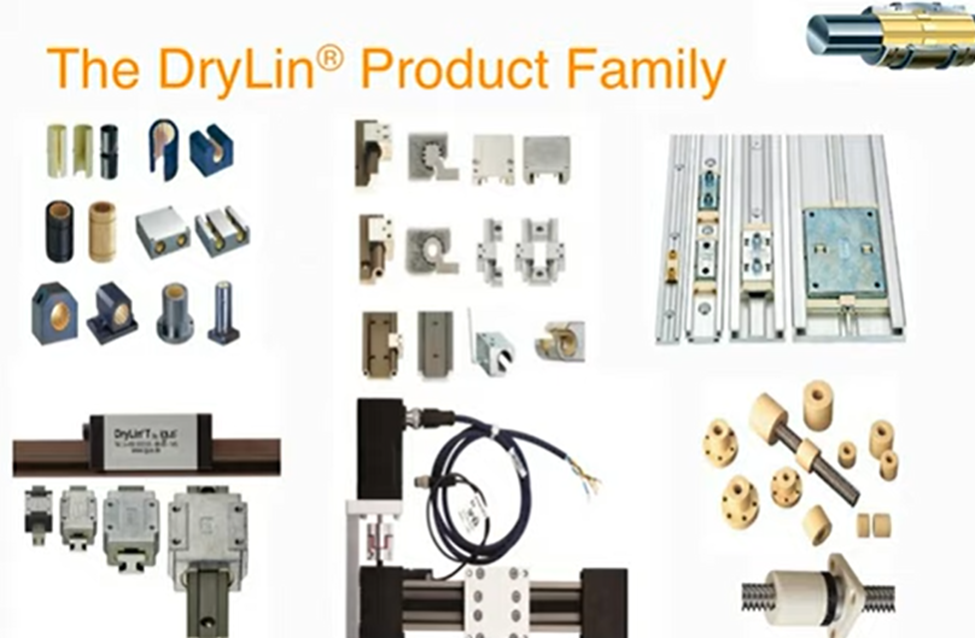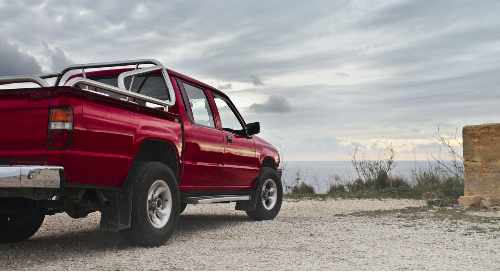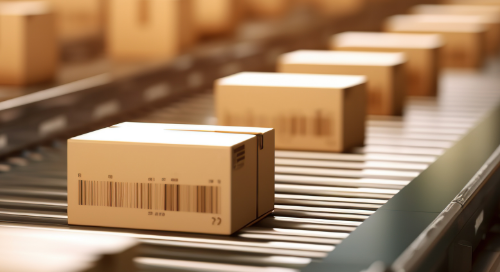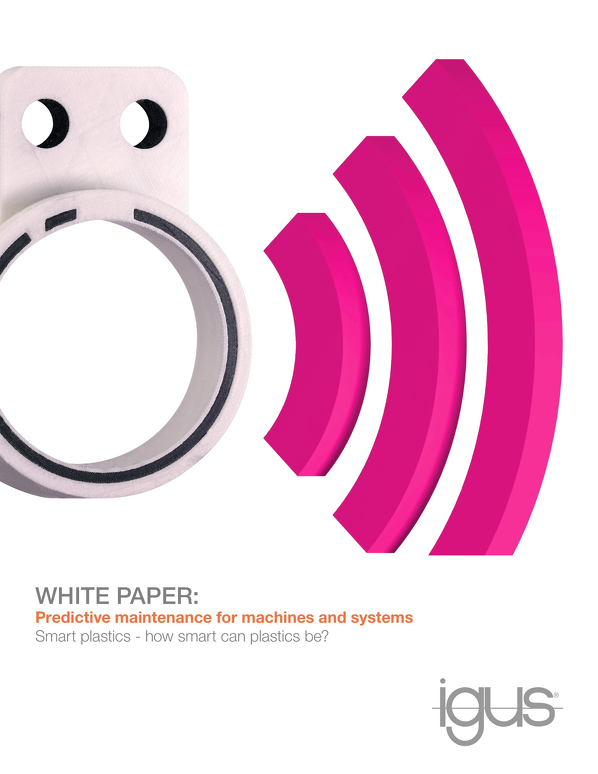Sliding vs Rolling: Benefits of Plastic Linear Bearings
Prefer to watch the webinar? Here you go: https://www.youtube.com/watch?v=SLXX4kHNp5s
The topic of today's webinar is sliding versus rolling: the benefits of plastic linear bearings. We are going to discuss how to correctly implement plastic linear plain bearings into applications where you are likely more familiar with designing in recirculating ball bearings. Implementing plastic linear bearings is a way to help you improve the lifetime of your equipment, reduce costs and eliminate the need for grease from your applications.
This presentation is technical in nature and there are a number of key takeaways:
- How composite plastic bearings are made
- How what we call motion plastics or engineered plastics differs from simpler commercial plastics available on the market
- How they work
- How they differ from recirculating ball bearings
- How they can help reduce the maintenance and downtime associated with lubrication or lubrication-related failures in the field
- How they are able to offer cost reductions through self-lubrication
- How to properly implement plastic linear bearings into your designs
- Different application examples (so you can better understand when and where to use plastic bearings)
A Note on Tribology
Tribology is a core competency that igus focuses on when creating motion plastics. We study mating surfaces, including the wear and the frictional characteristics of these systems. Basically, we try to develop materials that enhance plastics for bearings. A lot of you are used to using parts that require oil and maintenance. If we can reduce oil costs and wear, we might be able to reduce the overall cost of your systems and applications.Design of Composite Plastic Bearings
We start with base polymers. These polymers could be a POM or PA base. These polymers are responsible for the main mechanical properties of the bearing. It gives the core strength, carrying capability and the core temperature limits of the product. To that, we add a matrix of solid lubrication. Sometimes that takes the form of PTFE fillers. There are other types of solid lubricants, sometimes silicone, that we add to the bearing materials. These lubricants are responsible for reducing friction in the application. We also add strengthening fibers and reinforcement compounds into the base material, which not only help the load carrying capability, but they also help the wear resistance of the parts. This bearing itself is only one half of the equation in a bearing system. The other half of the equation is the shaft or the rail that the bearing is riding against.Counter Phase and Washdowns
The counter phase occurs when transfer of the bearing material goes into the microfinish of the shaft. What’s important to understand is that once the transfer is made, it can't be washed away. This is a core benefit of plastic parts. These parts work well in applications that are submerged or submitted to washdown environments. In a lot of bottling lines, caustic washdowns take place. If you were trying to use bearings that required wet lubrication, as soon as they were sprayed with the washdown, the bearing lubricants would be leached from the system. This leaching means that in order to maintain the whole line, you would need to re-administer lubrication. Plastic bearings don't require this and are well-suited for applications that have chemical washdown or are submerged in water.Geometry of Plastic Parts
A lot of people are used to seeing plastic bearings in a simple sleeve or flanged form. However, plastic linear bearings can also have features on the outer diameter that can help anti-rotation in applications. These features can keep the parts mechanically fixed in the axial direction. Grooves are an important feature of the inner diameter (ID) of plastic bearings from igus. Grooves serve two purposes. One is that they are dirt channels. If your application is heavily contaminated by dirt, soil or particles, grooves can act as a channel for that media. Even more critically, they're able to reduce the amount of thermal expansion of the ID of the bearing towards the shaft. That means that we can produce parts to a tighter tolerance, with a tighter clearance in the application than you could with a standard sleeve bearing. A standard sleeve bearing, as it swells, would only have one way to go. That's towards the shaft, which could cause bearing failure. Therefore, the grooves on the ID are a critical feature of a plastic thermoplastic bearing.How igus Plastics Compare to Generic Plastics
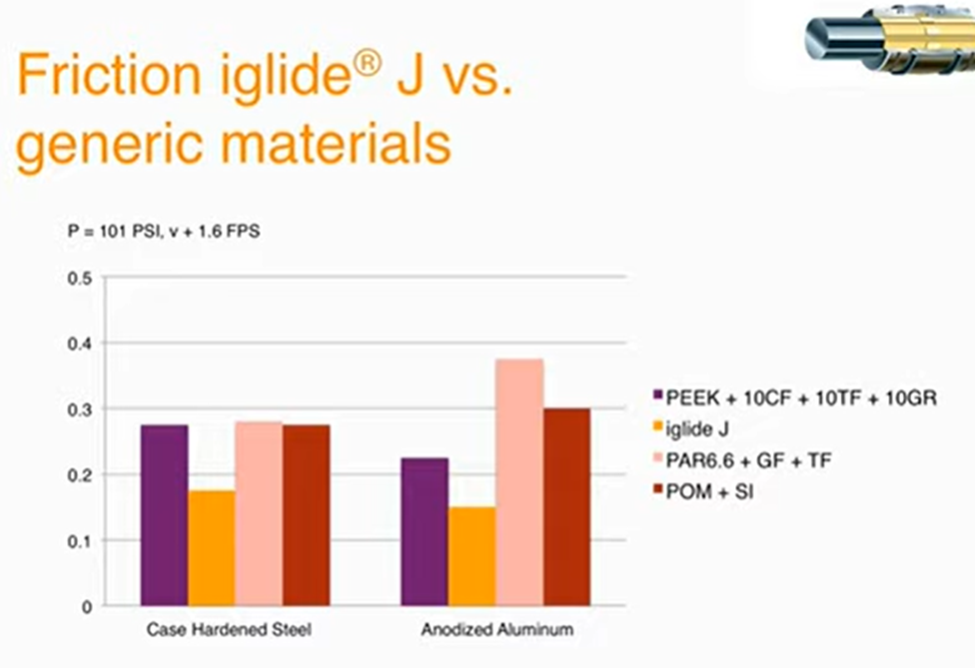
Plastic Linear Bearings vs. Recirculating Ball Bearings
There are frictional differences between plastic sliding bearings and linear recirculating ball bearings. Recirculating ball bearings have a coefficient of friction of 0.01, whereas plastic sliding bearings have a coefficient of friction between 0.16 and 0.25.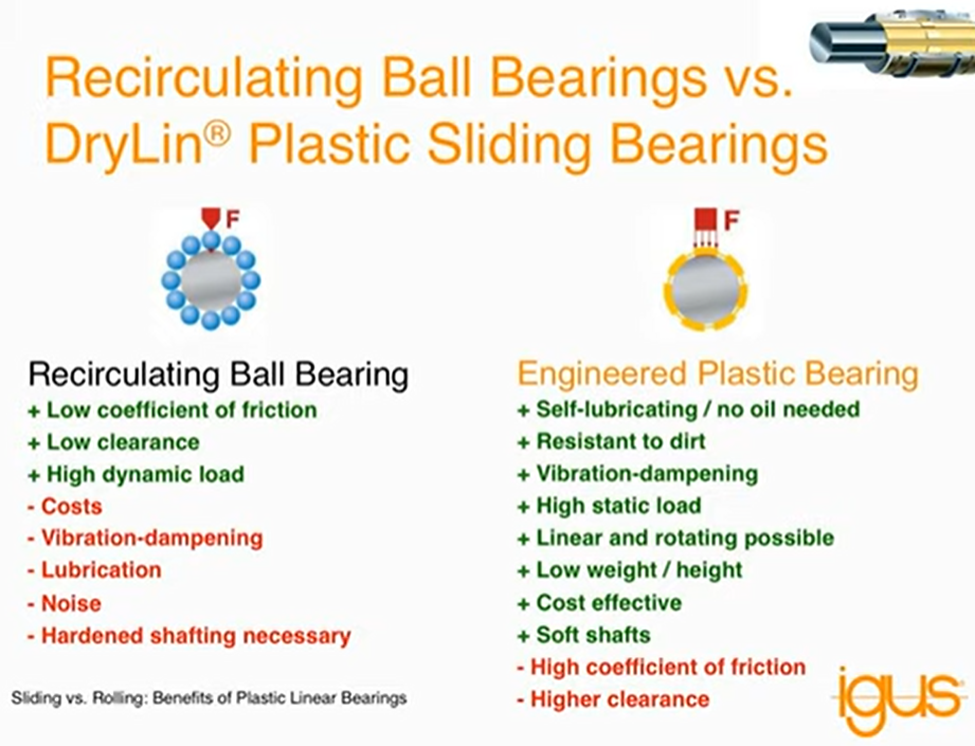
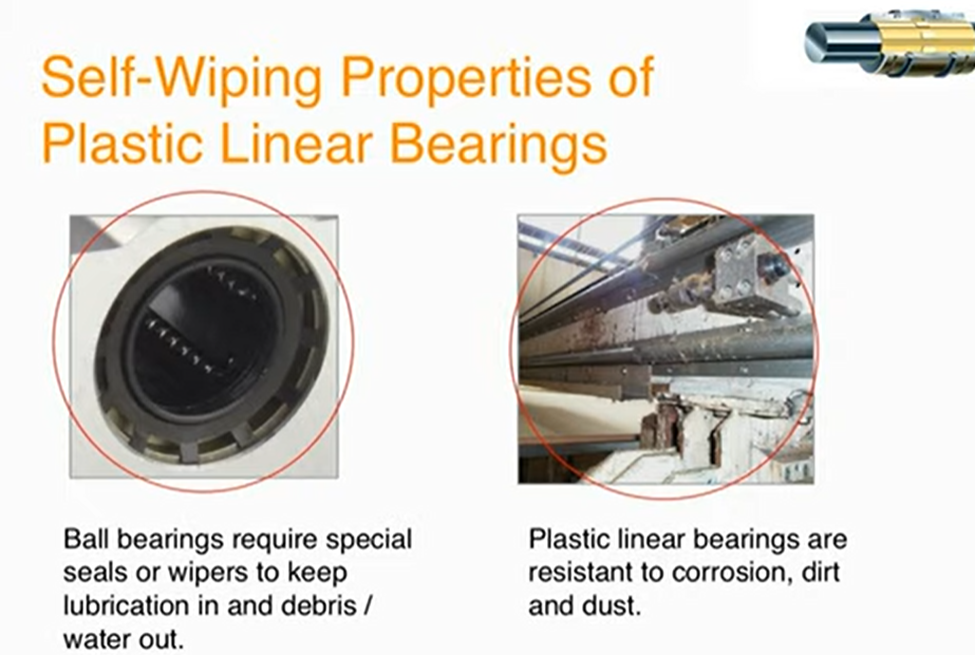
Design Guide: Fixed and Floating Bearings
Square shaped or profile guides are the easiest ones to adjust as floating bearings. We simply either remove the plastic pads from the sides or top, depending on the orientation of the application or we mold the plastic parts narrower. This enables the part to carry a load in the direction of gravity but slide and float towards the other rail. This design not only helps with misalignments but also helps optimize the system under the 2:1 rule. In round shaft or round rail designs, in an adapter form, which would have the same dimensional sizing as a recirculating ball bearing, we actually reduce the outer diameter of the adapter itself and add a little crowned feature. This feature enables a plus or minus half degree of angular misalignment forgiveness. Usually o-rings are provided, which help reduce any noise caused by the metal-on-metal contact of the adapter pivoting inside of the housing. What’s critical about fixed and floating bearings and how they can improve your design is to optimize the 2:1 ratio, which in turn reduces the drive power that the system needs in order to move. This reduction increases the likelihood that you can move your application by hand. You may be able to undersize your motor as well. This minimizes the wear on the bearing and it also increases the maximum permissible velocity of the system. Overall, contrary to what you might think, floating bearings help to maintain a better precision and clearance in a linear system. These bearings also help to compensate for angular misalignment in the rails or shafts.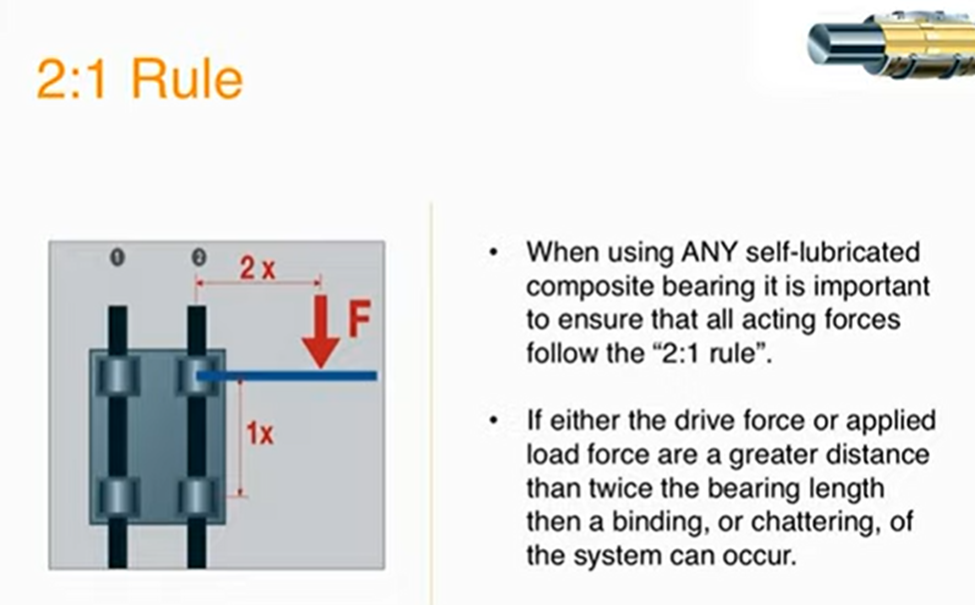
Design Guide: Linear Bearing System Configurator
To help make it easier for engineers to specify plastic bearings and to make sure they're going to work correctly in their application, igus offers an online expert system we call the drylin expert 2.0. You're able to choose the geometry that you'd like to use in your application, then you're able to model it up in our software. After that model, you receive a series of results and get to understand better if the parts will move smoothly again. You can also understand and get an idea of the clearance and wear in the application, as well as get an idea of the drive force. One really critical function of this software is the fact that you're able to move. You're able to tell the system where the center of gravity is for your application and where you intend on driving it in your application. It's going to measure those coordinates from a pre-set zero-point established in the software and after you put in your load acceleration and your expected lifetime travel, you're able to take the next step. This is a real clear way to see it on the modeling software itself. After you input all your data, it's time to check out the results, request part numbers, and download CAD files right off the Internet. This system is very easy to use.Plastic Plain Bearing Applications
Two core industries for igus motion plastics are definitely lab automation and fluid handling. A lot of different lab machines rely on linear plastic sliding parts. Pipettes is another instance but the fact that there's no lubrication makes them really well-suited for any type of use around scientific chemicals or chemistry. There's no lubrication to leach into the samples. It keeps the immediate lab environment clean. Here's an application on a blood analyzer. On the elevator mechanism, we replaced ball bearings, primarily due to the fact there was no need for oil. Not only did they use plastic bearings, but they also coupled that with aluminum shafting, which is again the best mating surface for plastic sliding parts. The upfront cost savings to the customer was $36K per year compared to the price of bearings. Therefore, not only was there a technical advantage, there was a price advantage as well. Savings like this are part of the igus mission. Aside from linear parts, 3D printers use a lot of plastic bushings for pivoting or rotary applications, as well as plastic lead screws and nuts. Also, one absolutely core industry for igus’ plastic composite bearings is the packaging machinery business. One classic application is the welding jaws on vertical form fill seal machines. These are basically machines that have a hopper above that dispenses chips into a bag. These welding jaws are parts that close usually with heat. These types of applications can be nasty environments, depending on what the end user is packaging. The items to be packed could be harsh substances like onions, chips, mulch or all sorts of different media. Plastic bearings, due to their lack of wet lubricant, thrive in these applications.The drylin Product Family
Here's an overall comprehensive look at the drylin product family by igus.